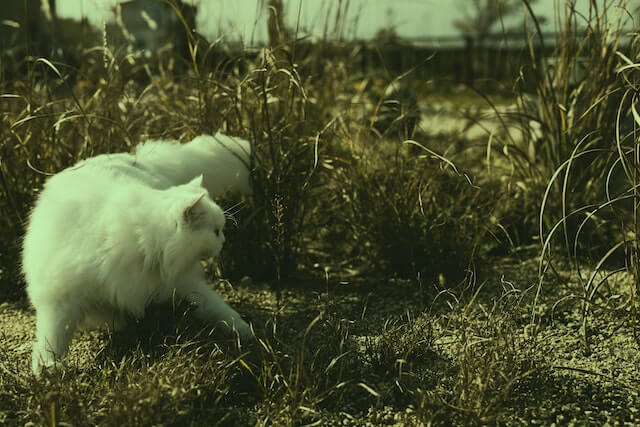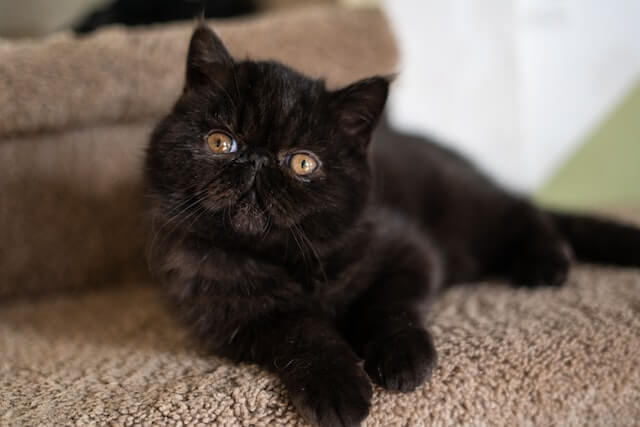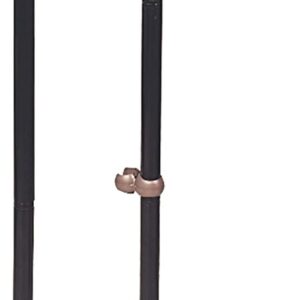The Majestic Persian Cat: A Regal Feline with a Rich History and Endearing Personality

The Persian cat is a long-haired breed that is among the most popular and beloved domestic cats in the United States. Known for their elegant appearance and sweet temperament, these feline companions have been popular pets for centuries, both in the United States and around the world.
History of Persian Cat
The Persian cat is an ancient breed that has been around for more than 2,000 years. They are believed to have originated in Persia, which is now known as Iran, where they were kept as beloved pets by royalty and aristocrats. The breed was first introduced to the United States in the late 1800s when an American named Harrison Weir imported a pair of long-haired cats from England. These cats quickly became popular in the United States, and over the years, breeders worked to refine and improve the breed’s appearance.
During the 1920s and 1930s, the Persian cat experienced a surge in popularity, and breeders began to develop different varieties of the breed, such as the Himalayan and the Exotic Shorthair. The Persian cat remained a beloved pet throughout the 20th century and continues to be a popular breed today.
Characteristics of the Persian Cat
The Persian cat is known for its distinctive appearance, with a round face, small ears, and a long, fluffy coat.
There are two main types of Persian cats: the traditional or doll-faced Persian, and the flat-faced Persian. The traditional Persian has a more elongated face and a less squished nose, while the flat-faced Persian has a shorter nose and a more extremely flat face.
The Persian cat has a dense, luxurious coat that requires regular grooming to keep it in good condition. The coat can come in a wide range of colors and patterns, including solid colors like white, black, and cream, as well as more complex patterns like tortoiseshell and tabby.

In addition to their striking appearance, Persian cats are known for their sweet and gentle personalities. They are typically calm and affectionate and enjoy spending time with their owners. They are also known for their quiet and dignified demeanor, which can make them a good choice for people who live in apartments or small homes.
The popularity of the Persian Cats in the United States
There are several reasons why Persian cats are such a popular breed in the United States. One of the main reasons is their beautiful appearance. With their long, silky coats and adorable faces, Persian cats are simply irresistible to many cat lovers. They are also known for their sweet and gentle personalities, which make them excellent companions for families, children, and individuals of all ages.
The Persian cat is one of the most popular breeds in the United States and has consistently ranked among the top ten most popular cat breeds for many years. According to the Cat Fanciers’ Association (CFA), the Persian was the second most popular breed in the country in 2020, with only the Exotic Shorthair ranking higher.
The popularity of the Persian cat can be attributed to several factors. For one, the breed’s distinctive appearance makes it a favorite among cat lovers who are drawn to its luxurious coat and adorable round face. Additionally, the Persian’s calm and gentle personality makes it a great pet for families with children or other pets.
However, the popularity of the Persian cat has also led to some concerns among animal welfare advocates. The breed’s distinctive flat face, which has been bred to be more extreme in recent years, can lead to health problems like breathing difficulties and eye issues. Some breeders have also been criticized for prioritizing appearance over health and temperament, which can lead to cats with genetic health issues and behavioral problems.
Another reason why Persian cats are so popular in the United States is their versatility. Unlike some other breeds, Persian cats are adaptable to a wide range of living situations. Whether you live in a small apartment or a large house, a Persian cat can make a great pet. They are also low-energy cats, which means they don’t require a lot of exercises or outdoor space. This makes them an excellent choice for busy families or individuals who may not have a lot of time to devote to daily walks or outdoor playtime.
Finally, Persian cats are known for their longevity. With proper care and attention, these cats can live for 15 years or more, which means they can be a cherished family member for many years to come. This long lifespan is another reason why many cat lovers in the United States choose Persian cats as their pets.
Breeding and health concerns
While Persian cats are beloved by many cat owners, there are some concerns when it comes to breeding and health. Over the years, breeders have worked to create specific traits in the breed, such as their short noses and round faces. However, this selective breeding has led to some health issues in the breed.
One of the main health concerns for Persian cats is their susceptibility to respiratory problems. Due to their flat faces, many Persian cats have trouble breathing, which can lead to respiratory infections and other health issues. Some cats may also have eye problems, such as tear duct blockages or infections.
To prevent these health issues, it is important to choose a reputable breeder who prioritizes the health and well-being of their cats. It is also important to provide
There are several types of Persian cats, each with its own unique features and characteristics.
Traditional or Doll-Faced Persian

This is the original type of Persian cat with a more elongated face and a less squished nose. This type of Persian is generally healthier than the flat-faced Persian, as they have a lower risk of respiratory problems and eye issues. The traditional Persian has a long, fluffy coat, and comes in a wide range of colors and patterns.
Flat-Faced or Peke-Faced Persian

The flat-faced Persian, also known as the Peke-Faced Persian, has a shorter nose and a more extremely flat face. This type of Persian has become more popular in recent years, but it is controversial due to concerns over health issues associated with the flat face. Flat-faced Persians are prone to respiratory problems, eye infections, and dental issues.
Chinchilla Persian

The Chinchilla Persian is a type of Persian cat with a white or silver coat and black tipping. They have shorter, fluffier coats than other types of Persian cats, and are known for their sparkling green or blue eyes. Chinchilla Persians are often bred for their showy appearance and are one of the most expensive breeds of Persian cats.

The Himalayan Persian, also known as the Colorpoint Persian, is a cross between the Persian and the Siamese. They have a pointed pattern on their ears, face, and tail, and come in a wide range of colors, including chocolate, lilac, and blue. Himalayan Persians are known for their calm, affectionate personalities, and are popular as both pets and show cats.
Exotic Shorthair

The Exotic Shorthair is a type of Persian cat with a shorter, denser coat than other types of Persian cats. They have a more rounded face than the traditional Persian, but not as flat as the flat-faced Persian. Exotic Shorthairs are known for their laid-back and affectionate personalities and are a popular choice for people who love the look of the Persian but prefer a shorter-haired cat.
Also Read The 7 Cute Hairless Cat Breeds You Might Not Know
Overall, the Persian cat is a diverse breed with many different types and variations. Each type of Persian cat has its own unique look and personality and can make a wonderful addition to any household. However, it is important to research each type of Persian cat carefully and choose a breeder who prioritizes the health and welfare of their cats.
Persian cat price
The price of a Persian cat in the USA can vary widely depending on various factors such as the cat’s pedigree, age, color, and the breeder’s reputation. Generally, Persian cats are considered one of the more expensive cat breeds, but the price can range from a few hundred dollars to several thousand dollars.
For example, a Persian kitten from a reputable breeder can cost anywhere from $800 to $5,000 or more, depending on its lineage and the breeder’s reputation. Persian cats that are show-quality or have champion bloodlines can be significantly more expensive, with prices reaching $10,000 or more.
Adopting a Persian cat from a rescue or shelter can be a more affordable option, with adoption fees ranging from $50 to $500, depending on the organization and the cat’s age and health.
It is important to note that the price of a Persian cat should not be the only consideration when choosing a pet. Potential owners should also consider the cat’s health and temperament, as well as the breeder’s reputation and the cat’s living conditions. It is also important to factor in the ongoing costs of pet ownership, such as food, veterinary care, and grooming.
Overall, the price of a Persian cat in the USA can be significant, but there are options for those who are willing to do their research and adopt responsibly.
There is no one “most likable” color of a Persian cat in the USA as it ultimately comes down to personal preference. Persian cats come in a wide range of colors and patterns, including solid colors like white, black, cream, and blue, as well as tabby, bi-color, and pointed patterns.
Some people may prefer the classic look of a white or black Persian cat, while others may be drawn to the unique patterns of a tabby or calico Persian. Some people may also prefer the rarer color variations, such as chocolate or lilac Persian.
Ultimately, the most important factor in choosing a Persian cat should be their personality and temperament, as well as their health and well-being. It is important to choose a reputable breeder or adopt a responsible rescue organization that prioritizes the health and welfare of their cats.
While color and appearance may be important factors in choosing a Persian cat, they should not be the only considerations. It is important to research and chooses a cat that will be a good fit for your lifestyle and household, and that you will be able to provide the care and attention they need to thrive.
some general information on recommended food, grooming, and home items for Persian cats.
- Food: Persian cats have unique nutritional needs due to their long hair and flat faces. It is important to choose high-quality cat food that is specifically formulated for Persian cats. Look for cat food that contains high-quality protein, omega-3 and omega-6 fatty acids, and taurine. Wet food can also be beneficial for keeping your cat hydrated and maintaining their urinary health. Be sure to feed your Persian cat on a regular schedule, and monitor their weight to ensure that they are not becoming overweight.
- Grooming: Persian cats have long, thick coats that require regular grooming to prevent matting and tangles. Brush your Persian cat daily with a soft-bristled brush or a specialized cat comb to remove any loose fur and prevent hairballs. You may also need to trim the fur around their eyes and bottom to keep them clean and comfortable. Regular nail trims and dental care are also important for maintaining your cat’s overall health and well-being.
- Home items: Persian cats can be sensitive to their environment, and it is important to provide them with a comfortable, stress-free home. A cozy cat bed, scratching post, and interactive toys can help keep your Persian cat entertained and comfortable. Be sure to provide your cat with plenty of fresh water and a clean litter box that is large enough for them to move around in. You may also want to consider using a high-quality air filter to reduce dust and dander in your home, which can be beneficial for your cat’s respiratory health.
Conclusion
The Persian cat has been a beloved pet in the United States for over a century, thanks to its distinctive appearance, sweet personality, and calm demeanor. While the breed has faced some criticism over health and welfare concerns, it remains a popular choice among cat lovers throughout the country. Whether you prefer the traditional or flat-faced Persian, there’s no denying that these cats are a delightful and beloved addition to many homes.
Read here meet the Unique and Playful Scottish Fold Munchkin Cat Breed
Disclaimer: This article contains affiliate links to products. All product details reflect the price and availability at the time of publication. We may receive a small commission for purchases made through these links.



